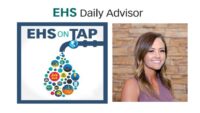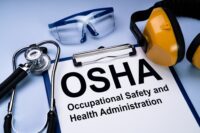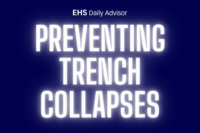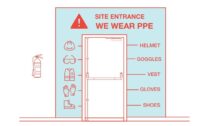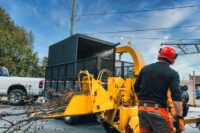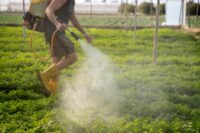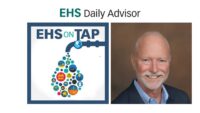Safety is a process, and as such, needs to be managed. This section offers resources to create a viable safety program, sell it to senior management, train supervisors and employees in using it, and then track and report your progress. Look also for ways to advance your own skills in these areas, both for your current job, and those that follow.
Free Special Report: 50 Tips for More Effective Safety Training
On episode 212 of EHS On Tap, Jade Brainard, Senior Director of Product Management at KPA, explains how companies can get a complete picture of and eliminate at-risk behaviors in the workplace.
In any environment where safety and well-being are accounted for, effective visitor management plays a crucial role. This is particularly true in settings such as construction sites, clinics, manufacturing facilities, and a range of workplaces in which controlling access and ensuring a safe environment are top priorities. In this article, we’ll explore the significance of […]
The Occupational Safety and Health Administration (OSHA) continues to carry out inspections and issue citations to employers that expose workers to hazardous conditions. We’ve summarized some of the key enforcement cases from the past few months for a look at where OSHA is focusing its efforts. Food processor supplier fined $1.7 million An Ohio-based food […]
There has been increased attention paid to trenching and excavation safety in recent years. Here’s what you need to know about preventing trench collapses, according to NIOSH.
After a shipping container weighing more than 4 tons fell and struck an employee at a jobsite near Tuscaloosa, Ballard Contractors Inc., a Moundville, Alabama, concrete contractor, entered into an informal settlement agreement with the Occupational Safety and Health Administration (OSHA) to resolve citations and penalties, the agency announced July 9. OSHA investigators learned […]
In this installment of EHSDA Shorts, Kenna Carlsen, Senior Research Associate, National Safety Council’s Work to Zero initiative, details the most important factors for EHS technical solutions. This clip was taken from a webinar titled “Making Innovation Accessible to Eliminate Workplace Fatality Risk,” which was part of EHS Worker Safety NOW virtual event. The full […]
By Superior Glove, leading safety glove innovator Did you know that small changes “nudges” in the environment can influence safer decisions and promote positive behavior? This theory is a concept in behavioral science that proposes subtle, indirect suggestions can effectively influence the behavior and decision-making processes of individuals and groups. By making slight tweaks to […]
Thompson Hardwoods Inc., a Hazlehurst, Georgia, sawmill, is facing $267,327 in Occupational Safety and Health Administration (OSHA) fines after a 24-year-old employee suffered fatal injuries while working with a woodchipper, the agency announced July 2. OSHA investigators found that the worker suffered serious injuries when the equipment activated while he tried to clear a log jam. After coworkers […]
Recent settlements in the product liability lawsuits stemming from the use of the weed killer Roundup mark progress in the ongoing litigation across the country. Roundup is one of the most widely used weedkillers in the United States. It was originally manufactured by Monsanto Co. and used glyphosate as its most active ingredient, which has […]
On episode 211 of EHS On Tap, Dr. Terry McSween talks about his new book The New Values-Based Safety: Using Behavioral Science to Improve Your Safety Culture.

